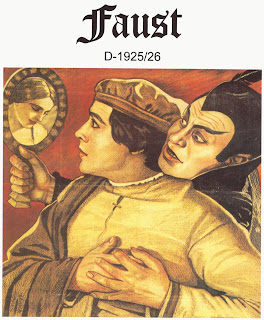1 Johann Wolfgang von Goethe
Johann Wolfgang von Goethe was born in Frankfurt, Germany in the middle of the 18
th century. Goethe, was a poet, a playwright, a novelist, a philosopher, a scientist.
He was a Renaissance man more than a century after the Renaissance ended, during that tentative time when the European Novel was struggling to be born. “The Sorrows of Younger Werther”, written when Goethe was young and bold , and autobiographical – was composed in a wild, suicidal clamor after being rejected by Charlotte Buff;
the novel’s protagonist, “Werther”, mad with heartache, commits suicide at the end of the book. An early example of the German “Sturm and Drang” movement,
(which translates as “Storm and Stress”), the novel shot Goethe to fame at an early age, planting the roots of the Romanticism of the early 19
th century, when Keats, Shelley, and Byron had not even been born yet.
2 “The Sorrows of Young Werther”
“The Sorrows of Young Werther” is a story told through a series of letters written between friends, Werther and Wilhelm.
Werther is staying in a fictional little town, where he meets a peasant girl named Lotte (modeled on Goethe’s real-life love, Charlotte Buff -- note the corruption here of the name “Charlotte”), who takes care of her siblings with no help. She is to marry a man 11 years her senior, Albert. Werther, in what seems like a swoon of passion similar to Frederic’s near the beginning of Flaubert’s “Sentimental Education”

(although the books were written a century apart, this way of how young men fall in love does seem eternal), falls in love with Lotte. In spite of these emotions, he resigns himself to trying to make a strong friendship with her. This causes him great longing and pain, which nosedives when Lotte marries Albert. Werther must cut back, must strenuously cut back his visiting. But one last visit? (Lotte and Werther kiss!). But in his young and mad way, Werther realizes someone - Albert, Lotte, or Werther – must die. He can’t bring himself to murder, so he kills himself! -- and he dies alone; buried with no service, no one, not even her to visit, under a linden tree.
3 Epistolary Novel
“Werther” was also an innovative piece of work, stylistically. The book is entirely composed of letters - as such, it is considered the first ‘epistolary novel’ (literary work told through letters).
There are many other epistolary novels - everything from C.S Lewis’s “The Screwtape Letters” to Dostoevsky’s “Poor Folk” to other works that employ the epistolary device but mix it up with other sorts of narrative devices. Goethe’s novel had a special relevance, though – people actually wrote to each other, communicated, back and forth with letters in his time. Today, the practice is outdated and practically replaced by email, Skype, telephones/cell phones, texting, etc. There is something of lasting physical value to a letter. Something to be said for the composition and careful work put into a hand-written letter. Something you can hold in your hands.
4 Handwriting
There is something to be said about hand-writing, too. Just as an epistle itself is a work of individuality and personal expression, so too does the very handwriting itself, a style nearly as unique and identifiable as a fingerprint, reflect a person’s personality.
The size of the letters, spacing, slope, roundness, size, slashes, pressure of the pen on the paper -- all are elements of handwriting that contribute to the ‘voice’ or identity of the hand-writing and, hence, the identity of the author. The field of Graphology -- this is the study of handwriting as it relates to the psychology of the author.
It is used in law enforcement; as well, the medical field employs Graphology to determine diseases of the brain and nervous system. As such, writing that might be termed “bad” can lead to a diagnosis of a brain disorder. A writing style that might be termed “good” could point to something like goodness, health, even saintliness. I wonder what graphologists might say of the writing of calligraphers? – “These are the souls of angels!” perhaps?…
5 Calligraphy
Calligraphy, or etymologically “beautiful writing”, is an art form wherein the letters being carefully written are made to be expressive and harmonious.
Today, the practice of calligraphy can be found in hand-lettered inscriptions and designs, and sometimes goes to the extent of becoming abstract lettering that can be barely legible – art for art’s sake.
Calligraphy differs from typography in that it is not as formally rigid, is more spontaneous and naturally expressive, and doesn’t conform as much to the lines of uniform print that are one of the hallmarks of typography. For these reasons, calligraphy has always been a script of choice for religious works – primarily for its decorative appeal. A great deal of calligraphy has been used in religious art, specifically in Illuminated Manuscripts, where artistic images are combined with the fancy lettering.




















